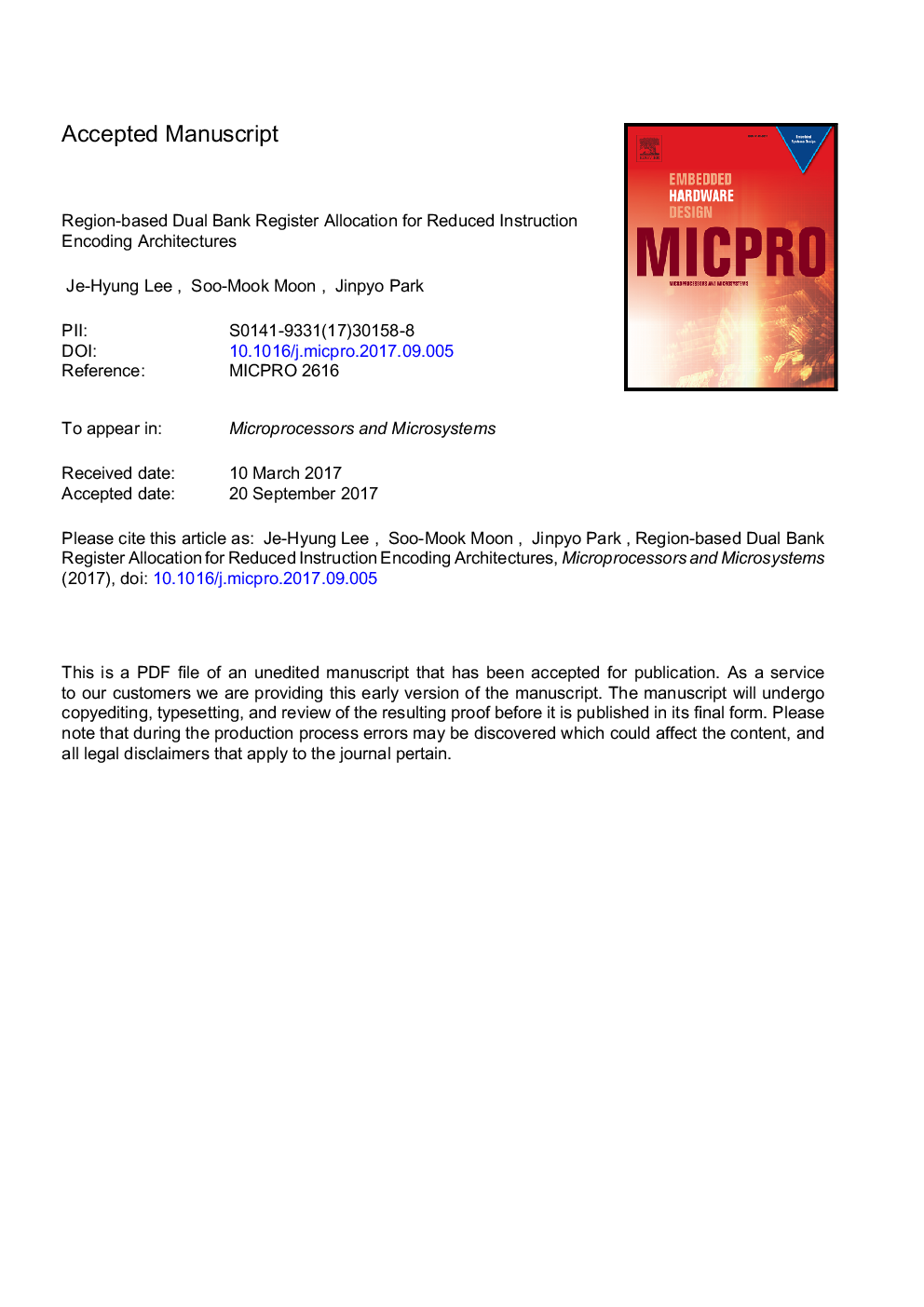| Article ID | Journal | Published Year | Pages | File Type |
|---|---|---|---|---|
| 6885977 | Microprocessors and Microsystems | 2017 | 29 Pages |
Abstract
In embedded systems, small code size is important due to memory constraints. One technique to achieve a small code size is reducing the instruction encoding from 32-bit to 16-bit, such as the ARM THUMB or MIPS-16 architectures. This half-size encoding leads to shorter register operands, making fewer registers available for register allocation and causing more spills, although invisible registers can be used as spill locations via copies. We propose reconstructing the original register file into dual-banks, added with the bank toggle instruction for bank changes and the inter-bank copies between the banks. We also propose an efficient dual-bank register allocation technique based on regions in the code to reduce spills. As a case study, we applied our banked register allocation model for the THUMB architecture. We found that the code size decreases by as much as 8% (5.8% on average) while the performance improves by as much as 11.1% (3.3% on average). Our results indicate that we would better organize the register file of an embedded CPU that can provide reduced encoding into dual banks for better quality of register allocation, rather than using the invisible registers for spills.
Keywords
Related Topics
Physical Sciences and Engineering
Computer Science
Computer Networks and Communications
Authors
Je-Hyung Lee, Soo-Mook Moon, Jinpyo Park,
